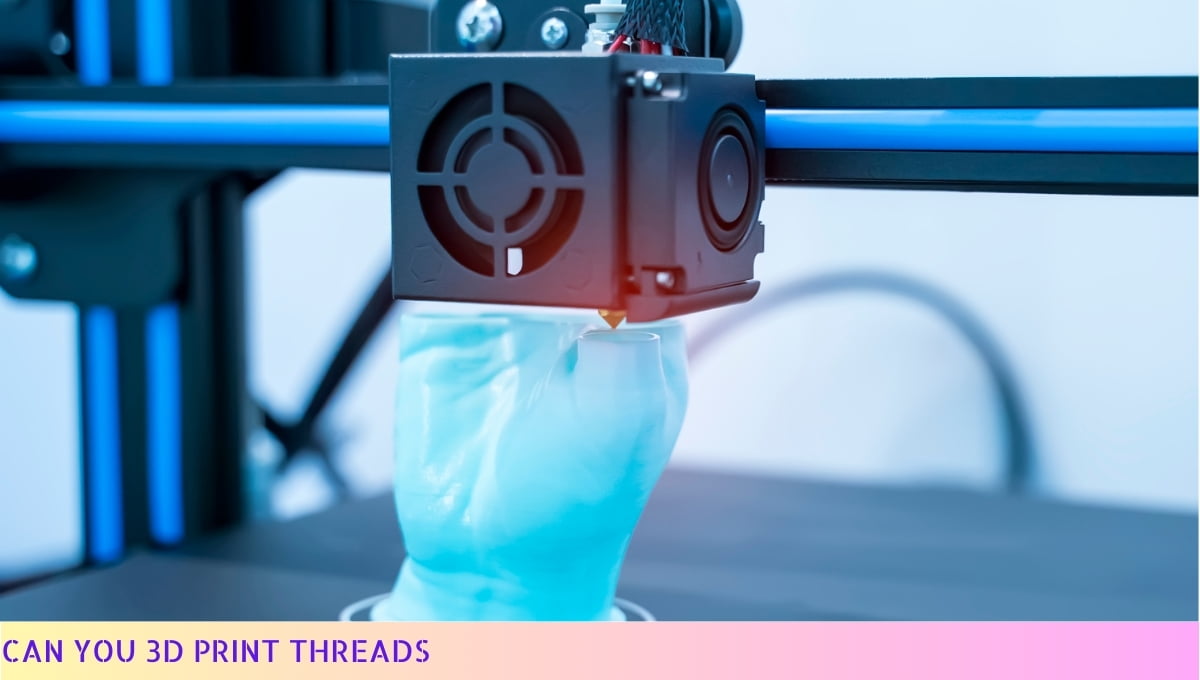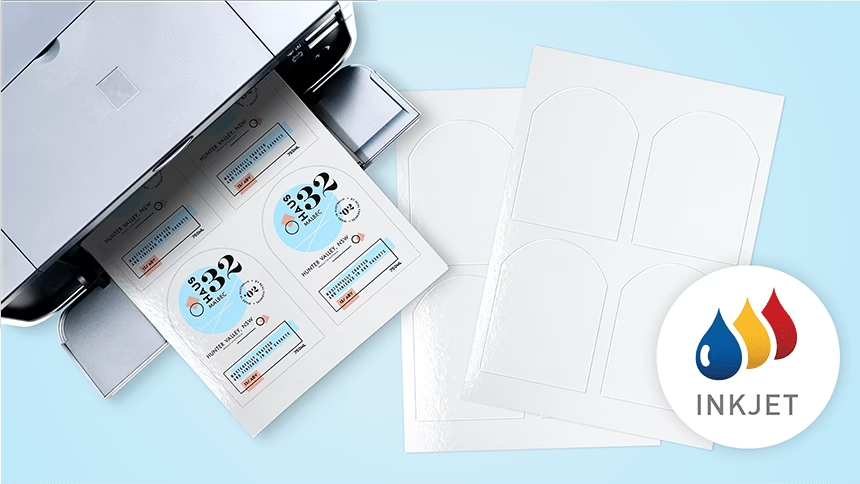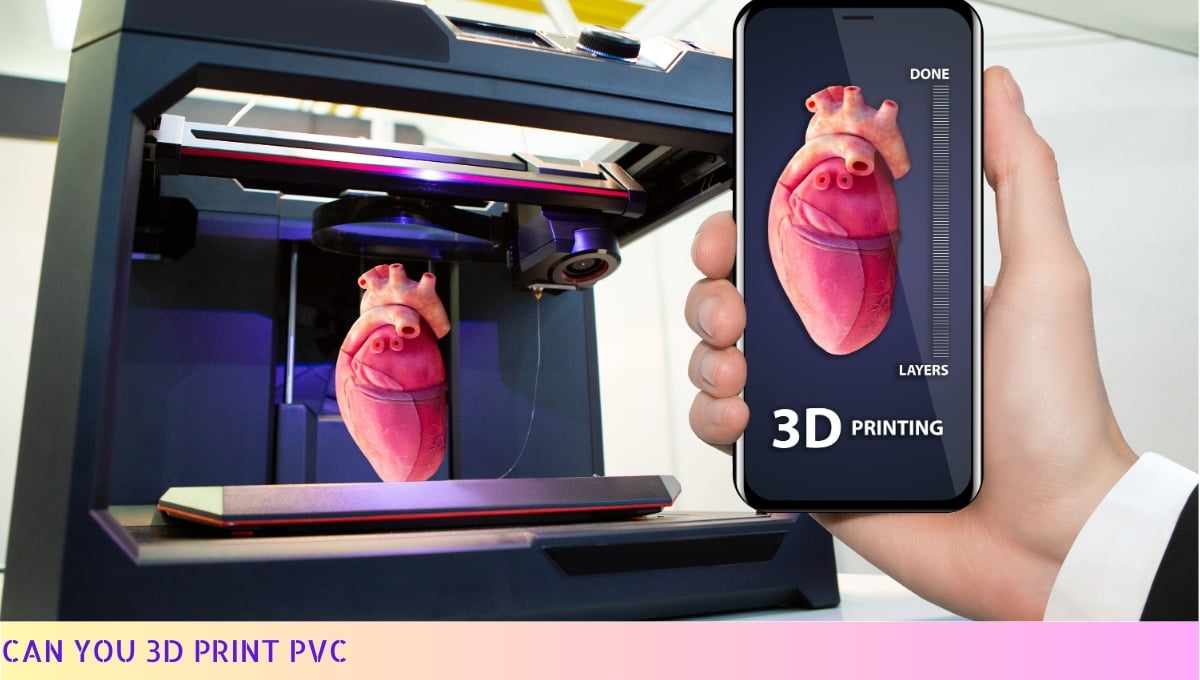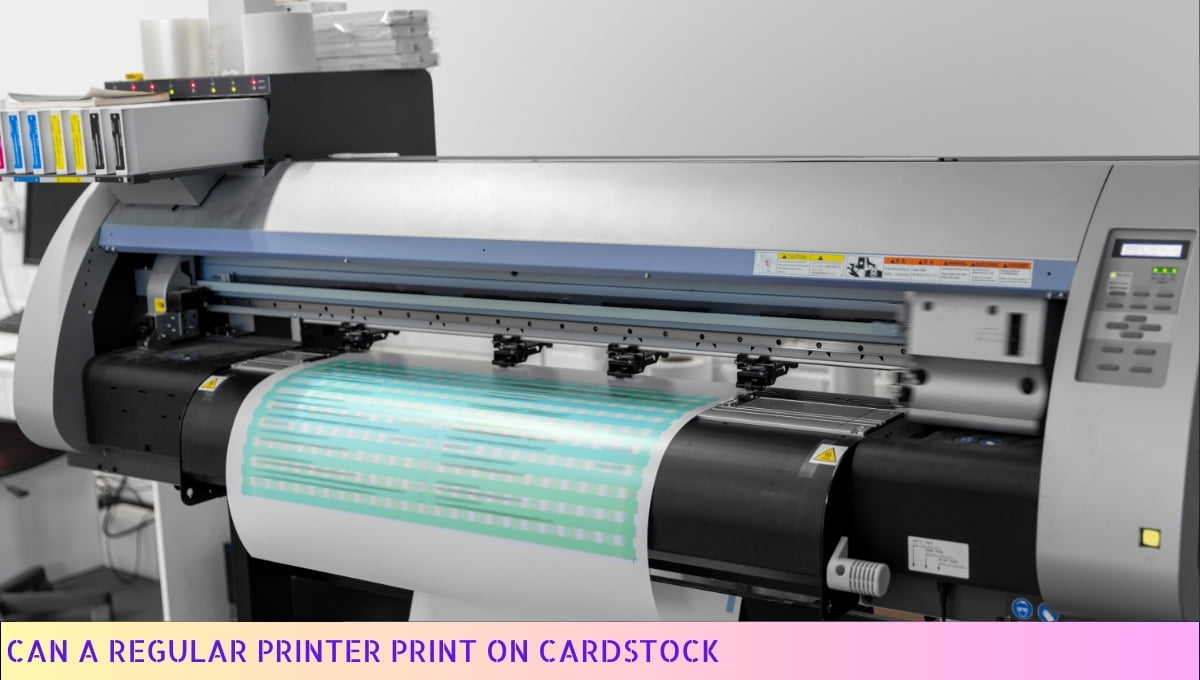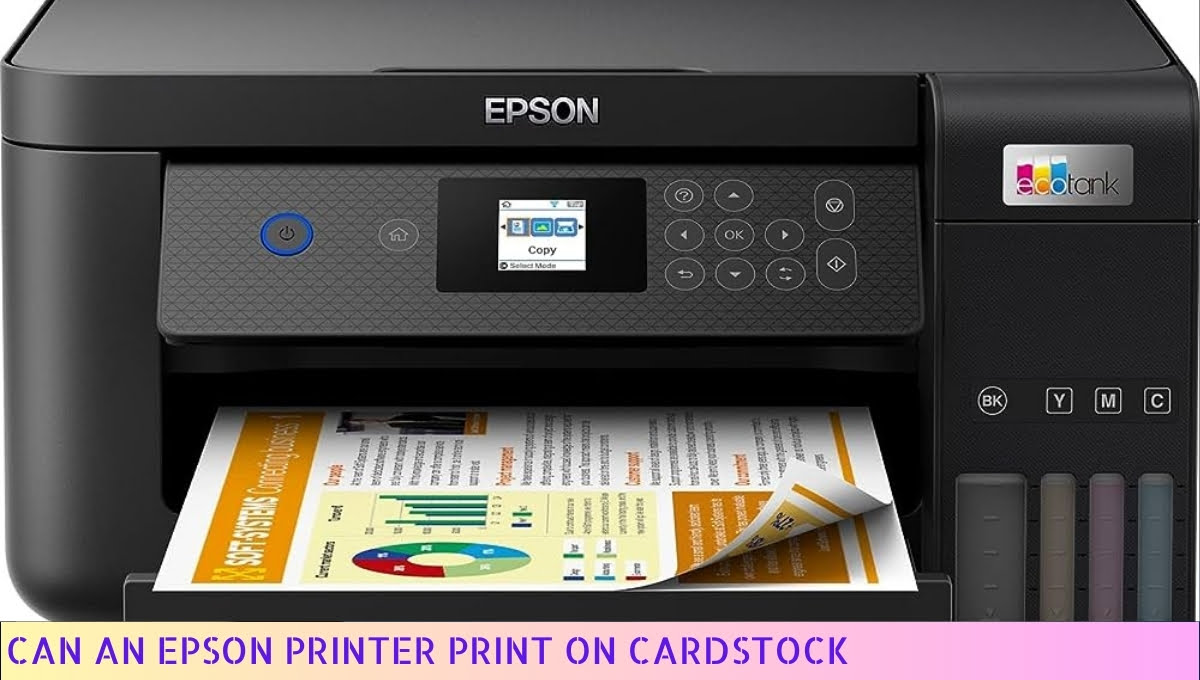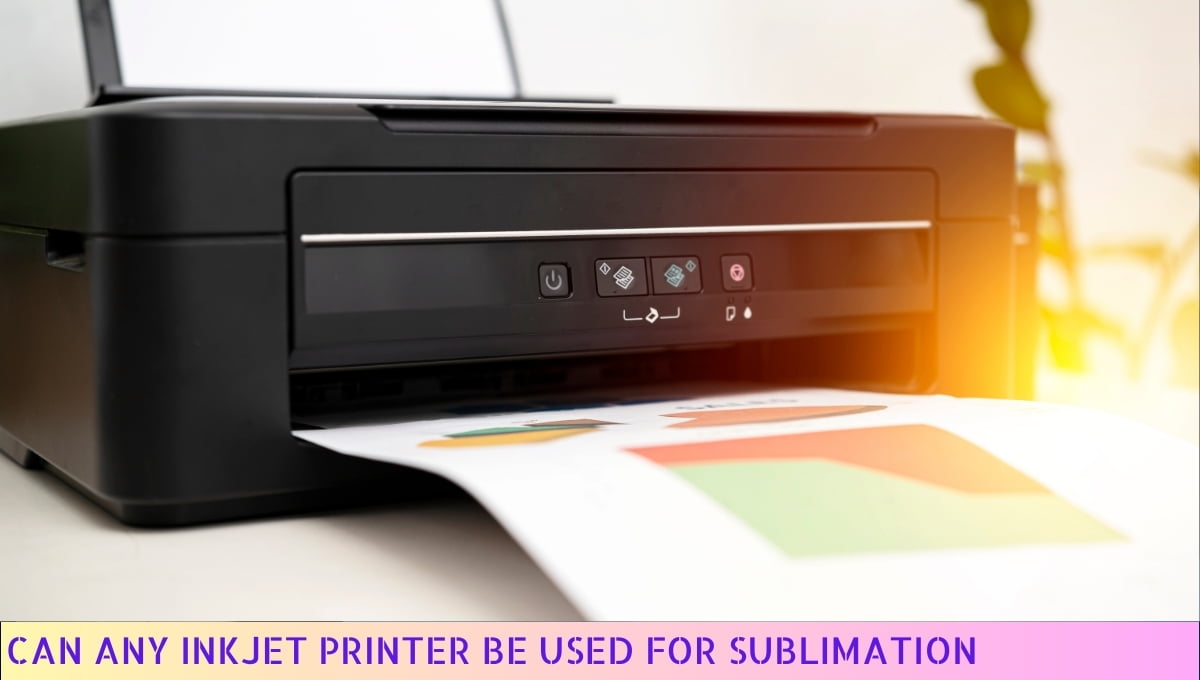Yes, you can 3D print threads! With the advancements in 3D printing technology, it is now possible to create intricate designs, including threaded objects.
By using specialized software and printers, you can produce custom threads for various applications, such as screws, bolts, and nuts.
This opens up a whole new world of possibilities for manufacturing and prototyping, allowing for greater flexibility and customization in design.
So, whether you need fine or coarse threads, 3D printing can help bring your threaded creations to life.
I. Understanding the Basics of 3D Printing Threads
So, you want to know all about 3D printing threads? Well, you’ve come to the right place! I’m here to break it down for you in the simplest way possible.
First things first, let’s talk about what exactly 3D printing threads are. Essentially, they are those grooves or ridges you find on screws, bolts, or nuts that allow them to be easily screwed or unscrewed.
These threads are crucial in many industries, from manufacturing to construction, and even in our everyday lives.
Now, you might be wondering, how does 3D printing come into play here? Well, my friend, 3D printing has revolutionized the way we create these threads.
Instead of traditional methods like cutting or molding, we can now use additive manufacturing techniques to build up the threads layer by layer.
But hold your horses, because 3D printing threads isn’t as simple as it sounds. There are some challenges we need to overcome to achieve those perfect threads.
The Challenges of 3D Printing Threads
One of the main challenges is ensuring the accuracy of the thread dimensions. You see, threads need to have precise measurements to fit perfectly with their counterparts.
Any slight deviation can lead to loose or tight connections, and that’s definitely not what we want.
Another challenge is the strength of the threads. Since 3D printed objects are built up layer by layer, the layers themselves can introduce weak points in the threads.
This means we need to find ways to reinforce those layers and ensure the threads can withstand the forces they’ll encounter in real-world applications.
Techniques for 3D Printing Threads
Now that we’ve discussed the challenges, let’s dive into some techniques used to overcome them and achieve high-quality 3D printed threads.
One popular technique is using support structures. These structures provide temporary support during the printing process, helping to maintain the accuracy and strength of the threads.
Once the printing is done, the supports can be easily removed, leaving behind those perfect threads.
Another technique is optimizing the printing parameters. By fine-tuning settings like layer height, print speed, and infill density, we can improve the overall quality of the threads.
This requires some trial and error, but hey, Rome wasn’t built in a day!
Lastly, post-processing techniques can also be employed to enhance the threads. This can involve sanding, polishing, or even using chemical treatments to smoothen the surface and improve the fit and finish of the threads.
Applications and Future Possibilities of 3D Printed Threads
Now that we’ve covered the basics and techniques, let’s talk about the exciting part – the applications and future possibilities of 3D printed threads.
3D printed threads have found their way into various industries, including aerospace, automotive, and healthcare. They are used in everything from aircraft components to prosthetic limbs.
The ability to quickly and cost-effectively produce custom threads opens up a world of possibilities for designers and engineers.
Looking ahead, we can expect even more advancements in 3D printing threads. With ongoing research and development, we may see improvements in thread strength, accuracy, and even the materials used.
Who knows, maybe one day we’ll have threads that are stronger than steel and lighter than air!
So, there you have it – a brief introduction to the world of 3D printing threads. It’s a fascinating field that continues to evolve and shape our future.
Whether you’re a hobbyist or a professional, understanding the basics and keeping up with the latest developments will surely give you an edge in this exciting realm.
II. The Challenges of 3D Printing Threads
1. Precision and Accuracy
One of the major challenges in 3D printing threads is achieving the required level of precision and accuracy. Threads require tight tolerances and precise dimensions to ensure proper fit and functionality.
However, due to the layer-by-layer nature of 3D printing, achieving the desired level of precision can be difficult.
The printer must be calibrated and the printing parameters carefully adjusted to minimize errors and ensure accurate thread formation.
2. Strength and Durability
Threads, especially those used in mechanical applications, need to be strong and durable. They should be able to withstand various forces and resist wear and tear.
However, 3D printed threads may not always possess the same strength and durability as traditionally manufactured threads.
The layer-by-layer construction can result in weak points or inconsistencies that may compromise the overall strength of the thread.
Special attention must be given to optimizing the printing process and selecting suitable materials to enhance the strength and durability of 3D printed threads.
3. Thread Integrity
Ensuring the integrity of 3D printed threads can be a challenge. Threads must have well-defined profiles and accurate pitch to ensure proper engagement and functionality.
However, the layering process in 3D printing can sometimes introduce imperfections or irregularities that affect the thread’s integrity.
Proper design considerations, such as adding support structures or optimizing the printing orientation, can help overcome these challenges and improve the overall quality of the printed threads.
4. Post-Processing Requirements
Unlike traditional thread manufacturing methods, 3D printed threads often require post-processing to achieve the desired level of quality.
This may involve removing support structures, sanding, or polishing the printed threads to enhance their appearance and functionality.
Post-processing can add complexity and time to the production process, making it essential to carefully plan and execute these steps to ensure the final product meets the required specifications.
5. Material Selection
The choice of material for 3D printing threads is critical to their performance and functionality. Different materials have varying properties, such as strength, flexibility, and temperature resistance.
It is important to select a material that can meet the specific requirements of the application. However, not all materials are suitable for 3D printing, and compatibility with the printer’s capabilities must also be considered.
Conducting material tests and experimenting with different options can help identify the most suitable materials for 3D printed threads.
6. Design Considerations
Designing threads for 3D printing requires careful consideration of various factors. Unlike traditional manufacturing methods, 3D printing allows for greater design freedom, enabling the creation of complex geometries.
However, certain design features, such as overhangs or unsupported structures, may pose challenges during the printing process.
Designers must strike a balance between achieving the desired functionality and ensuring printability. Iterative design optimization and utilizing design guidelines specific to 3D printing can help overcome these challenges.
Verdict
Overcoming the challenges of 3D printing threads requires a combination of technical expertise, careful planning, and experimentation.
By addressing issues related to precision, strength, integrity, post-processing, material selection, and design considerations, it is possible to achieve high-quality 3D printed threads that meet the requirements of various applications.
III. Techniques for 3D Printing Threads
Exploring the Art of 3D Printing Threads
Printing threads in the 3D world is like crafting a masterpiece with precision and finesse.
It requires a deep understanding of the techniques involved to ensure flawless results. Let’s dive into the fascinating techniques used for 3D printing threads:
1. Screw Threads
One of the most common techniques for 3D printing threads is the screw thread method. This technique involves creating threads with a helical structure, just like the threads you find on a traditional screw.
By carefully adjusting the pitch and depth of the threads, we can achieve a tight and secure connection between two components. This method is widely used in various industries, including manufacturing, engineering, and even healthcare.
2. Tapered Threads
Tapered threads add an extra level of versatility to 3D printed threads. With this technique, the diameter of the thread gradually decreases or increases along its length.
Tapered threads are perfect for applications where a tight seal or increased grip is required. They are commonly used in plumbing fittings, hydraulic systems, and electrical connectors.
By incorporating tapered threads, we can ensure a snug fit and prevent any unwanted leaks or loosening.
3. Interlocking Threads
When it comes to creating strong connections, interlocking threads are the way to go. This technique involves designing threads that interlock with each other, creating a robust and secure joint.
Interlocking threads are often used in applications that require high strength and stability, such as automotive parts, aerospace components, and industrial machinery.
By carefully aligning the threads, we can achieve a tight and reliable connection that can withstand rigorous use.
4. Customized Thread Profiles
In addition to standard thread profiles, 3D printing allows for the creation of customized thread profiles. This means we can design threads with unique shapes and geometries to suit specific requirements.
Whether it’s a square thread, a trapezoidal thread, or a completely custom profile, the possibilities are endless.
Customized thread profiles open up new avenues for innovation and enable us to tackle complex challenges that traditional manufacturing methods cannot easily address.
Unlocking the Potential of 3D Printed Threads
The world of 3D printing threads is a realm of endless possibilities. By harnessing the power of these techniques, we can revolutionize industries and unlock new potentials.
Some exciting applications of 3D printed threads include:
- Creating lightweight and durable prosthetics with customized threads for a perfect fit.
- Designing intricate and functional parts for the automotive industry, enhancing performance and efficiency.
- Producing complex threaded structures for aerospace components, ensuring safety and reliability.
- Developing innovative medical devices with specialized threads for improved patient care.
- Manufacturing unique and eye-catching consumer products that stand out in the market.
As technology advances and materials evolve, the possibilities for 3D printed threads will only continue to expand.
With each new breakthrough, we get closer to a future where the boundaries of design and manufacturing are pushed to unimaginable limits.
| Advantages of 3D Printed Threads | Challenges of 3D Printed Threads |
|---|---|
|
|
IV. Applications and Future Possibilities of 3D Printed Threads
Revolutionizing Industries
The world of 3D printing has opened up a plethora of possibilities when it comes to creating intricate and customized threads.
From aerospace to automotive, healthcare to fashion, the applications of 3D printed threads are expanding rapidly. These threads are not only changing the way we manufacture products but also revolutionizing entire industries.
1. Aerospace and Automotive
In the aerospace and automotive sectors, 3D printed threads are transforming the way components are designed and manufactured.
These threads offer lightweight and high-strength solutions, reducing fuel consumption and enhancing performance.
By utilizing 3D printing technology, engineers can create complex geometries that were previously impossible to achieve with traditional manufacturing methods.
This opens up new possibilities for designing more efficient and aerodynamic aircraft and vehicles.
2. Healthcare and Prosthetics
3D printed threads are making significant advancements in the field of healthcare. They are being used to create custom-made prosthetics and orthotics that perfectly fit an individual’s unique anatomy.
This not only improves comfort and functionality but also reduces the time and cost associated with traditional manufacturing processes.
Furthermore, researchers are exploring the potential of 3D printed threads for creating bioresorbable implants and scaffolds, which can aid in tissue regeneration and wound healing.
3. Fashion and Wearable Technology
The fashion industry is embracing the capabilities of 3D printed threads to push the boundaries of design. Designers are creating intricate and avant-garde garments with the help of 3D printing technology.
These threads offer endless possibilities for creating complex patterns, textures, and structures that were previously unattainable.
Additionally, the integration of 3D printed threads with wearable technology is opening up new avenues for creating smart and interactive clothing.
The Future Possibilities
The potential of 3D printed threads goes beyond the current applications. As technology continues to advance, we can expect even more exciting developments in this field. Here are a few future possibilities:
1. Biomedical Applications
Scientists are exploring the use of 3D printed threads for biomedical applications such as drug delivery systems and tissue engineering.
These threads can be designed to release medications in a controlled manner, making them ideal for personalized medicine.
Additionally, they can be used as scaffolds for growing artificial organs or repairing damaged tissues, revolutionizing the field of regenerative medicine.
2. Sustainable Manufacturing
3D printing has the potential to revolutionize manufacturing processes by reducing waste and energy consumption.
With 3D printed threads, manufacturers can produce components with minimal material usage, leading to a more sustainable approach.
Furthermore, the ability to recycle and reuse materials in 3D printing can contribute to a circular economy, minimizing environmental impact.
3. Space Exploration
The advancements in 3D printing technology have caught the attention of space agencies like NASA. 3D printed threads can be used to manufacture spare parts and tools on-demand during long-duration space missions.
This eliminates the need for carrying a large inventory of spare parts and reduces the cost and complexity of space missions. The possibilities for utilizing 3D printed threads in space exploration are truly out of this world!
Summary
The applications and future possibilities of 3D printed threads are vast and exciting. From revolutionizing industries to pushing the boundaries of design, these threads are transforming the way we create and manufacture.
As technology continues to advance, we can expect even more groundbreaking innovations in this field.
The future of 3D printed threads is bright, and it’s only a matter of time before they become an integral part of our everyday lives. So, buckle up and get ready to witness the thread revolution!
Can You 3d Print Threads – FAQs
1. Can you 3D print threads?
Yes, it is possible to 3D print threads using specialized techniques and materials.
2. What types of 3D printers can print threads?
Most types of 3D printers, such as FDM (Fused Deposition Modeling) and SLA (Stereolithography) printers, can be used to print threads.
3. What materials can be used to 3D print threads?
Various materials can be used to 3D print threads, including ABS, PLA, nylon, and flexible filaments.
4. Are the 3D printed threads as strong as traditional threaded parts?
The strength of 3D printed threads can vary depending on the material and printing parameters used. However, with proper design and post-processing techniques, 3D printed threads can be quite strong and functional.
5. How do you design 3D printed threads?
Designing 3D printed threads involves creating a specific thread profile using CAD software. The design should consider factors such as thread pitch, clearance, and tolerances.
6. Can 3D printed threads be used in functional applications?
Yes, 3D printed threads can be used in functional applications. However, it is important to consider the specific requirements of the application and choose appropriate materials and printing parameters.
7. What are the advantages of 3D printing threads?
Some advantages of 3D printing threads include the ability to create complex geometries, customization options, and the potential for rapid prototyping and production.
8. Are there any limitations to 3D printing threads?
Yes, there are some limitations to 3D printing threads. These include the potential for reduced strength compared to traditional threaded parts and the need for proper design and post-processing techniques.
9. Can 3D printed threads be used in industries such as aerospace or automotive?
Yes, 3D printed threads can be used in industries such as aerospace and automotive. However, thorough testing and validation may be required to ensure the threads meet the necessary performance and safety standards.
10. Are there any specific considerations when using 3D printed threads?
When using 3D printed threads, it is important to consider factors such as thread size, thread engagement, and the potential for post-processing to improve thread quality and functionality.
Wrapping Up
We’ve reached the end of our 3D printing adventure. So, can you 3D print threads? The answer, my friends, is a resounding YES! With the power of 3D printing, you can bring those intricate thread designs to life.
Whether it’s for screws, bolts, or any other threaded marvels, this technology has got you covered.
So, next time you need some fancy threads, don’t fret. Just fire up your 3D printer, let it work its magic, and voila! You’ll have threads that’ll make your projects sing. Happy printing, my savvy friends!

